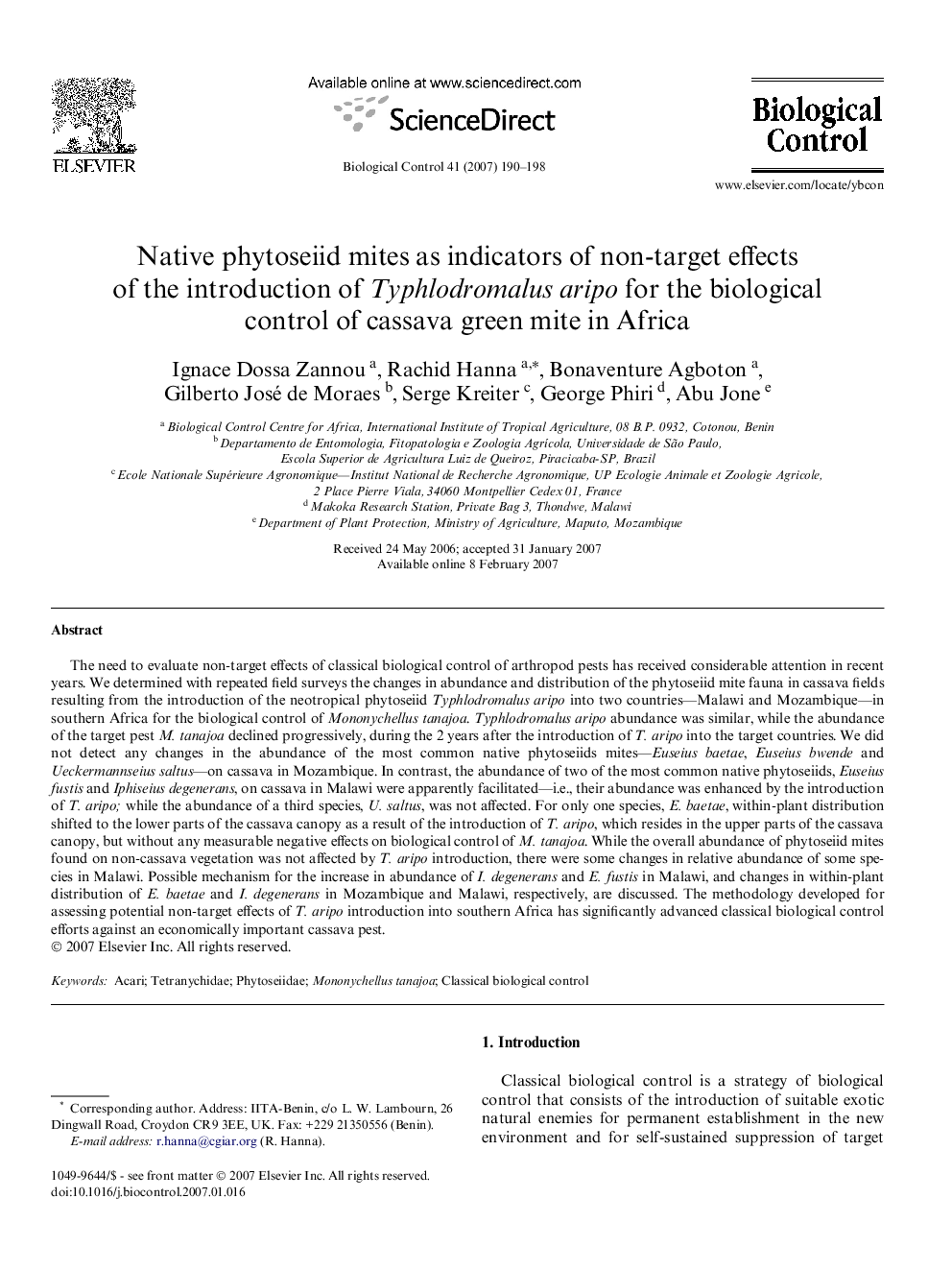| کد مقاله | کد نشریه | سال انتشار | مقاله انگلیسی | نسخه تمام متن |
|---|---|---|---|---|
| 4505082 | 1321126 | 2007 | 9 صفحه PDF | دانلود رایگان |

The need to evaluate non-target effects of classical biological control of arthropod pests has received considerable attention in recent years. We determined with repeated field surveys the changes in abundance and distribution of the phytoseiid mite fauna in cassava fields resulting from the introduction of the neotropical phytoseiid Typhlodromalus aripo into two countries—Malawi and Mozambique—in southern Africa for the biological control of Mononychellus tanajoa. Typhlodromalus aripo abundance was similar, while the abundance of the target pest M. tanajoa declined progressively, during the 2 years after the introduction of T. aripo into the target countries. We did not detect any changes in the abundance of the most common native phytoseiids mites—Euseius baetae, Euseius bwende and Ueckermannseius saltus—on cassava in Mozambique. In contrast, the abundance of two of the most common native phytoseiids, Euseius fustis and Iphiseius degenerans, on cassava in Malawi were apparently facilitated—i.e., their abundance was enhanced by the introduction of T. aripo; while the abundance of a third species, U. saltus, was not affected. For only one species, E. baetae, within-plant distribution shifted to the lower parts of the cassava canopy as a result of the introduction of T. aripo, which resides in the upper parts of the cassava canopy, but without any measurable negative effects on biological control of M. tanajoa. While the overall abundance of phytoseiid mites found on non-cassava vegetation was not affected by T. aripo introduction, there were some changes in relative abundance of some species in Malawi. Possible mechanism for the increase in abundance of I. degenerans and E. fustis in Malawi, and changes in within-plant distribution of E. baetae and I. degenerans in Mozambique and Malawi, respectively, are discussed. The methodology developed for assessing potential non-target effects of T. aripo introduction into southern Africa has significantly advanced classical biological control efforts against an economically important cassava pest.
Journal: Biological Control - Volume 41, Issue 2, May 2007, Pages 190–198